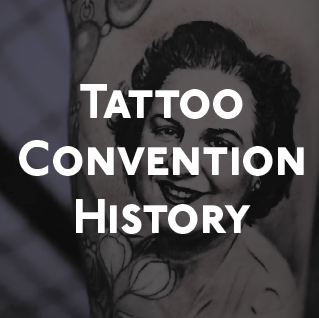Tattoo Industry, Conventions, and the Pandemic
As the world begins to return to “normal” after the 2020 COVID-19 pandemic, the tattoo community proves once again to be resilient and adaptive to an ever-changing world. Much like the results of the 1980 AIDS epidemic, the community remains vigilant in maintaining the craft and preserving integrity. While the AIDS epidemic resulted in poor stigma around the tattoo community, COVID-19 halted its practice almost altogether – resulting in a severe decline in public interest due to health risks. Yet, the industry has bounced back and remains compliant with government regulations to ensure safe practices. The world of tattoo conventions is resurfacing, adding new regulations and precautionary measures into the mix. As a result, we are reflecting on the first ever tattoo convention and its effect on the tattoo industry.
The First Tattoo Convention
On January 24th and 25th in 1976, Lyle Tuttle and Dave Yurkew held the first recorded convention in tattoo history in Houston, Texas. As described by Lyle Tuttle, the convention was “the event that changed tattooing forever.” It was an event which welcomed sailors, misfits, hippies, and bikers. Roughly 130 tattoo artists attended to compete for cash prizes, learn from other artists, and display their work in front of tattoo enthusiasts and peers. Now renown artists including Mr. Tramp, Shanghai Kate, Don Ed Hardy, Sailor West, Charlie Potter, and Crazy Ace were in attendance. Dave Yurkew – then president of the North American Tattoo Club – went on to hold 6 consecutive conventions until 1982.
Ripples of the First Convention
As a result, the first convention brought an uprise in tattoo popularity and acceptance within the public eye. Though, at the time, some artist protested the convention, finding distaste in introducing the craft into public eye. However, without this event, tattooing today would unlikely have the same popularity within mainstream communities. In addition, the event birthed a collective culture and traditions within the tattooing community. It acted as a place for artists and outcasts alike to meet, respect, and appreciate each other. The community achieved a deeper appreciation for the craft and increased public acceptance of tattoos. Today, you may find your doctor or even lawyer have full sleeves under their uniform. Since the first event in 1976, conventions have popped up all over the world. Though the 2020 pandemic had its effect on the community, tattooing conventions are resurfacing and coming back with full swing.

